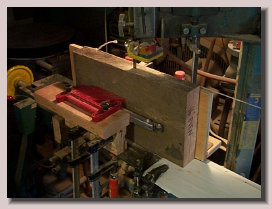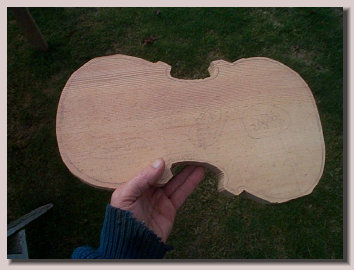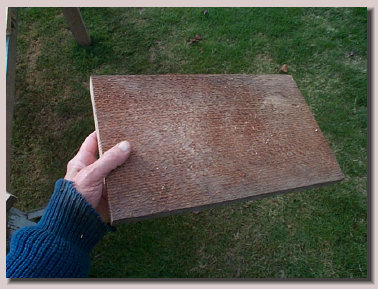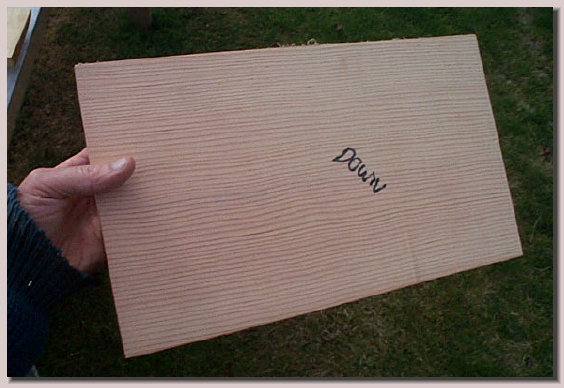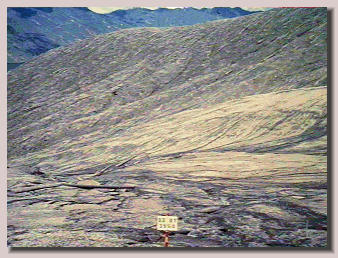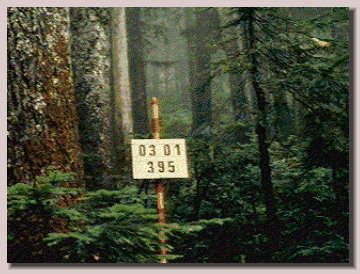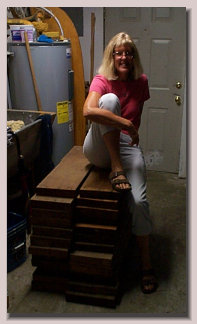Spruce top plate wood....
...I was fortunate to purchase some well aged (for 50 years) spruce this fall. This wood was harvested, cut into planks and then stored as stair treads in the pictured three story barn by Chester D. Williams in about 1960. He wanted some of this special spruce to eventually be used to make violin top plates. He felt that by using them as stair treads, the constant flexing of the wood over time would result in improved tone when eventually used for instrument making. He cut the 200 year old old-growth spruce (which reportably grew at the 7,000 foot altitude on (the Washington State volcano) Mount Saint Helens in about 1960. He rough cut them into 2" by 34" by 10" planks and supported them only at each end; using them in this inside stairway in his three story storage barn and workshop just north of Vancouver Washington, in the shadow of Mount St. Helens. As the land was now being sold for subdivision development, he sold me the wood.
... I was proud to have visited with him before his final illness ended his long and full life a few weeks ago at the age of 85.
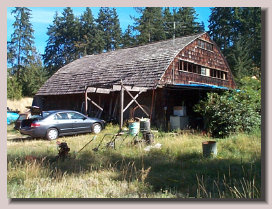
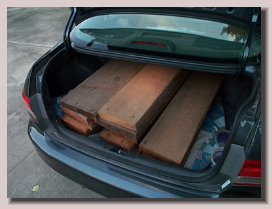
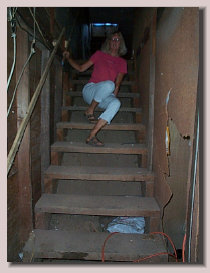
My lovely wife Karen who helped me remove the treads and haul them home. Since this was our 31st wedding anniversary, we were on our way out to dinner before returning home to Salem, Oregon.
(Boy were they ever dusty!)
Here I have rigged up a band saw mill to slice the planks in half. After this I was able to pick out the one piece tops from those which will be glued up plates. About 10 one piece top plates will be available for future instruments, as well as another 25 glued up top plates. At fifly years curing already, it can be used anytime!
This wood may produce excellent tone because it was very high altitude, old growth timber, grown in an area of severe winter weather which should produce exceptionally strong wood.
Here is the barn...
... and these are the spruce planks on the stairway inside the barn {and of course Karen}. They have been walked on (stressed) for the last forty years.
...(Notice how they are only supported at each end.)
This is how the wood grain looks; notice how uniform the grain lines are.
Violins made from this rare, ideal, old growth spruce may have a special tone. Time will tell!
When the volcano erupted in 1980, it desproyed the special area where this tree grew.
Here is a blank cut as an angle grain one piece violin top.... soon to be part of one of my new violins.
..While I had high hopes, it resulted in disappointment because the wood had a low "Response Tone", which I had not discovered yet. I replaced it with a more successful top plate; but learned something in the process!
When this now famous volcano violently erupted on May 18, 1980, these high altitude trees were destroyed. The photos above show the same site before and after. So as you see; this wood has a special history that can not be duplicated.
Page vw_2 (modified 12/2020)




